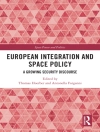Tremendous research is taking place to make photoelectrochemical (PEC) water splitting technology a reality. Development of high performance PEC systems requires an understanding of the theory to design novel materials with attractive band gaps and stability. Focusing on theory and systems analysis, Advances in Photoelectrochemical Water Splitting provides an up-to-date review of this exciting research landscape.
The book starts by addressing the challenges of water splitting followed by chapters on the theoretical design of PEC materials and their computational screening. The book then explores advances in identifying reaction intermediates in PEC materials as well as developments in solution processed photoelectrodes, photocatalyst sheets, and bipolar membranes. The final part of the book focuses on systems analysis, which lays out a roadmap of where researchers hope the fundamental research will lead us.
Edited by world experts in the field of solar fuels, the book provides a comprehensive overview of photoelectrochemical water splitting, from theoretical aspects to systems analysis, for the energy research community.
Inhoudsopgave
The Challenge of Water Splitting in View of Photosynthetic Reality and of Research Trends; Theoretical Design of PEC Materials; Computational Screening of Light-absorbing Materials for Photoelectrochemical Water Splitting; Unravelling the Charge Transfer Mechanism in Water Splitting Hematite Photoanodes; Rate Law Analysis of Water Splitting Photoelectrodes; Emerging Semiconductor Oxides for Direct Solar Water Splitting; Particulate Photocatalyst Sheets for Efficient and Scalable Water Splitting; Applications of Bipolar Membranes for Electrochemical and Photoelectrochemical Water Splitting; Modelling-derived Design Guidelines for photoelectrochemical Devices; Technoeconomic Analysis of PEC Water Splitting at Various Scales












